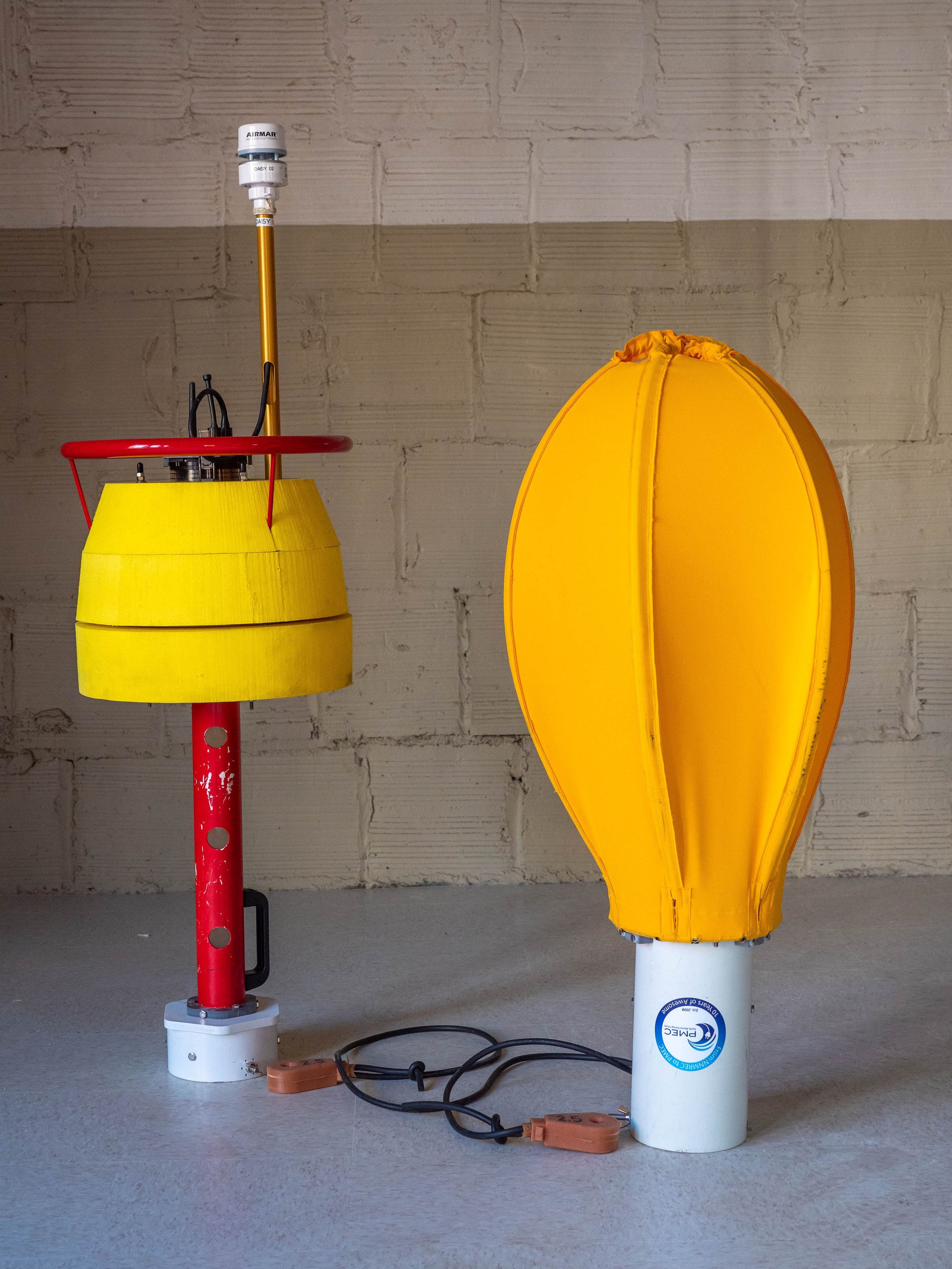
daisy
Drifting
Acoustic
Instrumentation
SYstem
ENSURE THE SAFETY OF MARINE LIFE
by accurately measuring underwater noise from marine energy converters, distinguishing natural flow noise from actual radiated sound
DAISYs are easily deployed from small vessels, making data capture about the underwater soundscape easier than ever!
Extremely configurable DAISYs operate for up to 12 hours on one charge.
DAISYs can be deployed as a single unit or as an array for sound localization. This is especially useful in understanding noise at and around wave and tidal energy converters.
The Shallow DAISY configuration is best used in tidal and river currents with limited clearance, like in this deployment around ORPC’s Modular RivGen® turbines in Igiugig, AK.
With a small and lightweight form, a DAISY or DAISY array is easily deployed by a crew of two.
Thoughtfully designed for smooth deployments in harsh conditions. Consider DAISYs to achieve your acoustic monitoring goals!
DAISY Variants
C-DAISY
For applications in tidal and river currents, the C-DAISY’s hydrophone is surrounded by a fabric flow shield to suppress flow noise. They have undergone significant benchmarking to evaluate flow shield effectiveness at isolating the hydrophone from surrounding motion to ensure important acoustic data is not buried.
W-DAISY
For use in areas with high wave energy, the W-DAISY’s are equipped with an intermediate heave plate for motion dampening to protect valuable acoustic insights. These system have been used to survey Wave Energy Converters (WECs) at WETS to complement longer-term monitoring projects.
Shallow DAISY
With a shorter profile, the Shallow DAISY is well-equipped to survey shallow water sites. They have been used to take measurements around an ORPC Modular RivGen® turbine in MIllinocket, ME, and were able to clearly detect tones from variable frequency drive excitation of the generator and gearbox.
Publications
Polagye et al. (2024) Performance of a Drifting Acoustic Instrumentation SYstem (DAISY) for characterizing radiated noise from marine energy converters. J. Ocean Eng. Mar. Energy
Haxel et al. (2022). Underwater Noise Measurements around a Tidal Turbine in a Busy Port Setting. J. Mar. Sci. Eng., 10(5), 632.
Chang et al. (2021). Clearing a Path to Commercialization of Marine Renewable Energy Technologies Through Public-Private Collaboration. Frontiers in Marine Science, 8.
Polagye, B., Murphy, P., Cross, P., and Vega, L. (2017) Acoustic Characteristics of the Lifesaver Wave Energy Converter, 12th European Wave and Tidal Energy Conference, Cork, Ireland, August 28-31.








